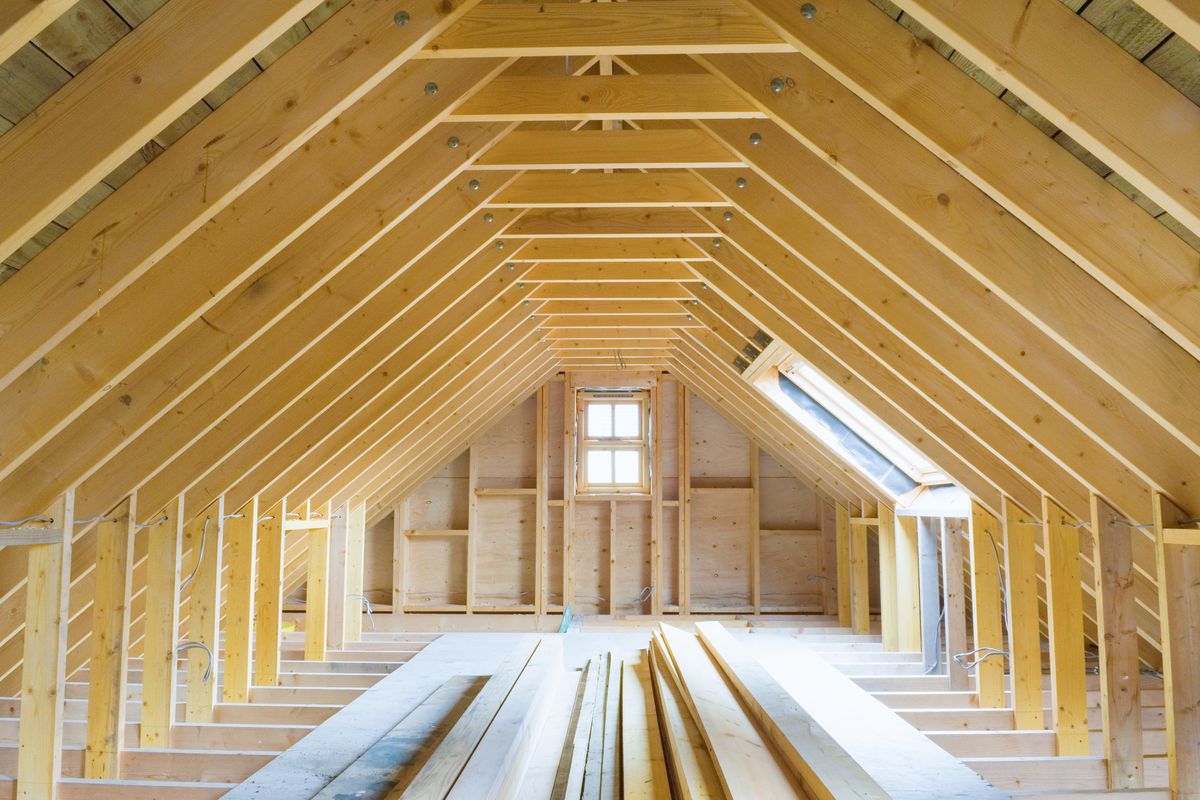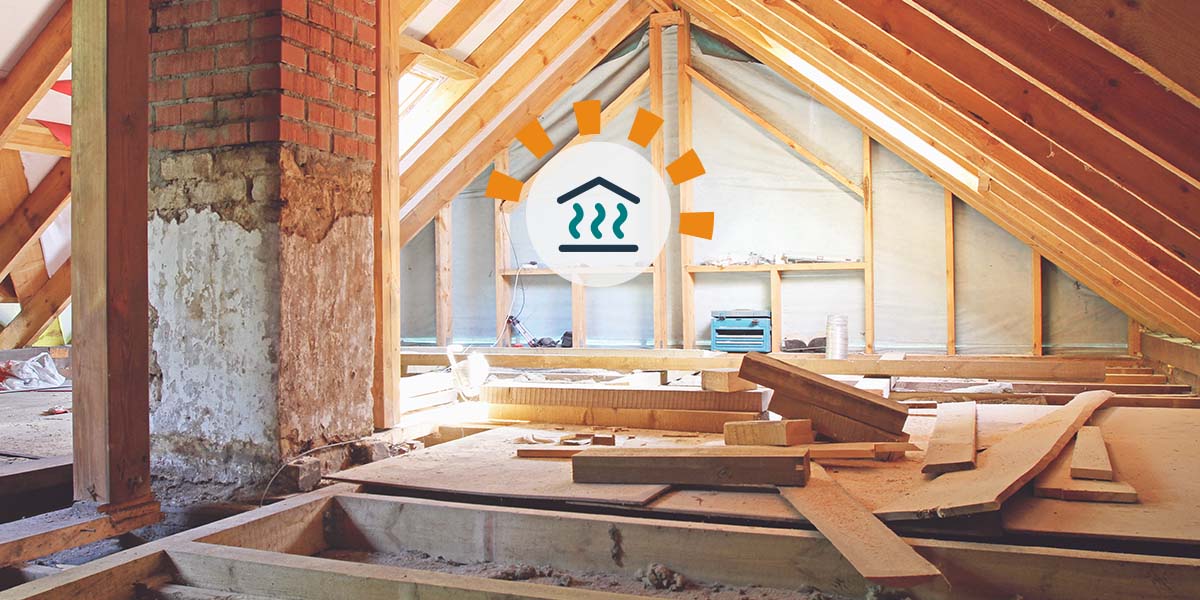Leading Advantages of Upgrading Attic Insulation DFW for Your Home Comfort
Leading Advantages of Upgrading Attic Insulation DFW for Your Home Comfort
Blog Article
Discover the Different Kinds of Attic Insulation and Their One-of-a-kind Advantages for Your Home's Power Efficiency
.jpg)
Fiberglass Insulation
Fiberglass insulation is one of the most frequently made use of products for attic insulation as a result of its outstanding thermal performance and cost-effectiveness. Composed of tiny glass fibers, this material effectively traps air, developing a shielding barrier that assists keep constant interior temperature levels. Its high R-value per inch makes it specifically reliable at resisting heat transfer, which is critical for energy conservation in homes.
Installation of fiberglass insulation is relatively uncomplicated, often readily available in batts or loose-fill types, fitting different attic room arrangements. Additionally, it is non-combustible and resistant to moisture, minimizing the risk of mold and mildew advancement. This resilience adds to its long life, making fiberglass a feasible long-term investment for home owners.
Moreover, fiberglass insulation is frequently made from recycled products, which boosts its eco-friendliness. The material can additionally add to soundproofing, minimizing sound transfer between areas. While it is necessary to put on protective gear during installment to prevent inflammation from the fibers, the overall advantages of fiberglass insulation, consisting of energy cost savings and ecological considerations, make it a popular selection for boosting attic efficiency and advertising a comfy living environment.
Spray Foam Insulation
Spray foam insulation is a highly reliable alternative for attic insulation, known for its remarkable air securing and thermal efficiency. This innovative insulation material is composed of a mix of isocyanate and polyol material, which, when combined, expands rapidly to fill gaps and cavities in the attic room space. Its ability to stick to numerous surfaces makes certain a constant barrier versus air leakages, dramatically minimizing warmth loss throughout cooler months and heat gain throughout warmer periods.
Among the crucial advantages of spray foam insulation is its high R-value per inch, which suggests it provides exceptional thermal resistance in a reasonably slim application. This is especially advantageous in attic rooms where space is commonly minimal. Additionally, spray foam can aid reduce moisture buildup, decreasing the risk of mold and mold growth, which can be harmful to both the framework and indoor air high quality.
While the initial price of spray foam insulation might be greater than standard options, its long-lasting power savings, paired with increased convenience and boosted home value, make it a rewarding investment for homeowners seeking boosted energy performance. Attic Insulation DFW. Overall, spray foam insulation sticks out as an efficient remedy for maximizing attic insulation
Cellulose Insulation

Cellulose insulation is a popular option for attic room insulation, largely made up of recycled paper items treated with fire retardants. This eco pleasant alternative is known for its outstanding thermal performance, efficiently minimizing warmth transfer in both summertime and winter months. The dense composition of cellulose enables it to fill up voids and spaces in attic room rooms, providing a seamless barrier versus air leaks.
One of the significant benefits of cellulose insulation is its ability to withstand mold and bugs, owing to the fire resistant therapies utilized throughout production. Additionally, it flaunts a high R-value per inch, which translates into superior power performance. Property owners can expect reduced heating & cooling expenses as an outcome of boosted hop over to these guys insulation.
Setup is normally accomplished via blowing loosened cellulose right into the desired area, permitting a fast and reliable process. This approach likewise lessens disruption to the existing framework. In addition, cellulose insulation has a fairly low ecological impact, as its production procedure utilizes recycled materials, adding to sustainable building methods.
Rock Woollen Insulation
Among the different alternatives for attic insulation, rock woollen, likewise called mineral wool, attracts attention due to its excellent thermal and acoustic efficiency. Made from all-natural or recycled materials, rock wool is created by thawing rock and rotating it right into fibers, leading to a product that provides exceptional insulation residential or commercial properties.
Among the considerable benefits of rock wool insulation is its high R-value, which indicates its efficiency in withstanding heat circulation. This characteristic not only improves power efficiency but also contributes to preserving a comfortable indoor temperature year-round. Furthermore, rock woollen is inherently fireproof, making it a more secure choice for homes as it can endure high temperature levels without melting or releasing poisonous fumes.
Additionally, rock wool insulation excels in soundproofing capabilities, efficiently reducing noise transmission in between rooms and from outdoors sources. This makes it an ideal option for property owners seeking a peaceful living setting. Rock wool is moisture-resistant, helping to stop mold and mildew development and maintaining the structural integrity of the attic area. Overall, rock wool insulation supplies a comprehensive option for improving energy performance, security, and convenience in household settings.
Glowing Barrier Insulation
Glowing obstacle insulation acts as an effective solution for minimizing heat transfer in attics, specifically in warmer environments. This kind of insulation works by showing convected heat away from living spaces, therefore reducing the quantity of warmth that enters a home throughout heat - Attic Insulation DFW. Generally made up of a very reflective product, such as aluminum foil, radiant obstacles his response are set up in attic rooms, facing the roof covering, where they can intercept incoming warmth from the sunlight
The main benefit of glowing barrier insulation is its capacity to reduced air conditioning expenses. By reflecting warmth as opposed to absorbing it, radiant obstacles can aid preserve a more stable Get More Information indoor temperature level, decreasing the work on cooling systems. This effectiveness translates right into lower energy bills and enhanced convenience for property owners.
In addition to power savings, glowing obstacles can also add to boosted interior air quality. By decreasing warm build-up, they assist reduce moisture levels, which can prevent mold growth and boost overall air flow. When mounted appropriately, glowing barrier insulation can be a very useful addition to any type of energy-efficient home, making it a worthy factor to consider for homeowners looking to enhance their attic insulation technique.
Verdict
In verdict, understanding the different types of attic room insulation-- fiberglass, spray foam, cellulose, rock woollen, and radiant barriers-- allows property owners to make enlightened decisions regarding energy effectiveness. By selecting the suitable insulation material, considerable reductions in power costs can be attained, along with improvements in interior convenience.

In verdict, comprehending the different types of attic room insulation-- fiberglass, spray foam, cellulose, rock woollen, and radiant obstacles-- allows homeowners to make educated decisions pertaining to energy effectiveness.
Report this page